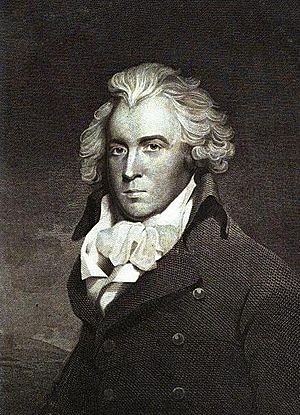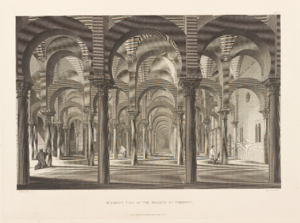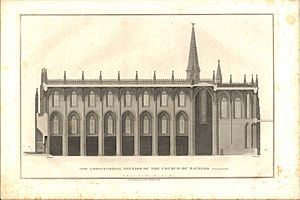James Cavanah Murphy facts for kids
Quick facts for kids
James Cavanah Murphy
|
|
|---|---|

James Cavanah Murphy, engraving after Martin Archer Shee, from Travels in Portugal (1795)
|
|
| Born | 1760 Blackrock, Cork
|
| Died | 1814 |
| Nationality | Irish |
| Occupation | Architect |
James Cavanah Murphy (born 1760, died 1814) was an Irish architect. He was also an antiquary, which means he studied old buildings and objects.
Contents
The Life of James Cavanah Murphy
Murphy was born in Blackrock, Cork, Ireland. He started his career as a bricklayer. He then traveled to Dublin to study architecture and art. Around 1775, his name was on a list of students at the Dublin Society's drawing school. There, he learned to draw tiny pictures (miniatures), and to use chalk and crayons.
Later, he worked as an architect in Dublin. In 1786, he was one of seven architects asked for advice on adding to the House of Commons. He and another architect helped build a design by James Gandon.
Travels and Studies
In December 1788, a man named William Burton Conyngham asked Murphy to draw pictures of the Batalha Monastery in central Portugal. Murphy returned to Dublin in 1790. By the end of that year, he was in England.
In 1802, he went to Cadiz, Spain. He stayed there for seven years, studying Moorish architecture. This is a style of building that came from North Africa and the Middle East. While in Spain, he also had some diplomatic duties, which means he helped with official tasks for his country.
Later Years and Legacy
Murphy settled back in England in 1809. In 1813, he got a special right (a patent) for a way to stop wood and other materials from decaying. He spent his last years getting his notes on Moorish architecture ready to be published.
Sadly, James Cavanah Murphy died on September 12, 1814, in London. He was only 54 years old. Only part of his main book had been published before he passed away.
Murphy's Published Works
James Cavanah Murphy created several important books with his drawings and studies:
- Plans, Elevations, Sections, and Views of the Church of Batalha (1795): This book included 27 plates (drawings) of the Batalha Church. It also had an introduction about the rules of Gothic architecture. A history of the church, translated by Murphy, was also included.
- Travels in Portugal (1795): This book shared his experiences and observations from his travels in Portugal.
- General View of the State of Portugal (1798): This work gave a broad look at Portugal at the time.
- Arabian Antiquities of Spain (1813–16): This was a major work with 110 plates based on Murphy's drawings. It showed ancient buildings and art from Spain that had Moorish influences. Thomas Hartwell Horne edited the book and wrote the descriptions.

Thomas Crofton Croker mentioned that Murphy had many notes and drawings left behind. A large book of his drawings of arabesque (fancy, flowing) designs is now in the library of the Royal Institute of British Architects.
Family Life
James Cavanah Murphy never married. When he died, his money and belongings (his estate of £5,000) were managed by his sister, Hannah. She was married to Bernard McNamara.


